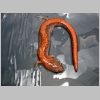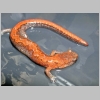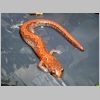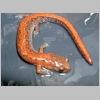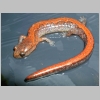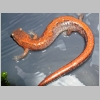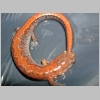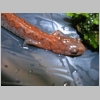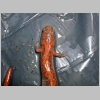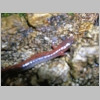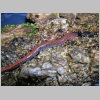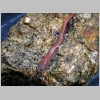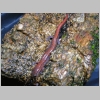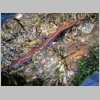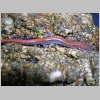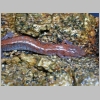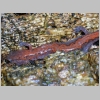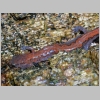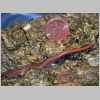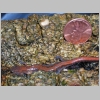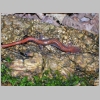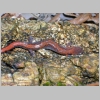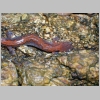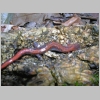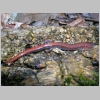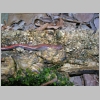| This salamander gets its name from the sawtoothed band along its back. These bands can be yellow, orange, red or dark brown to black. Zigzags often live in upland forests where they can is found under large stones or logs. Zigzag salamanders differ from our other salamanders because they reproduce on land not in water. The female lays a few eggs in a nest under a decaying log or in a moist areas under stones. She coils her body around the developing eggs, brooding them to keep them moist. Most remarkably, the embryos pass through a larval stage while still in the egg. When they hatch, the babies look like tiny adults, sometimes being less than 1/2 inch in length. This species is a member of the family Plethodontidae, commonly known as lungless salamanders. They have no lungs; they get all the oxygen they need by transfering it across moist body surfaces including the skin and mouth lining. Because of this, they can dry out. In the hotter months they go deep into the ground where conditions are always cool and moist. You are most likely to encounter one on the surface during in cooler months. |
